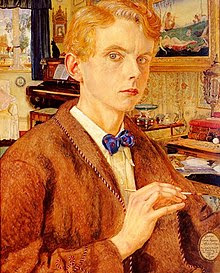All hail the King of Sobvent! I really couldn't do a month of misery without the marvellous and miserable art of the wonderful Frank Holl, creator of this...
 |
| A Doubtful Hope (1875) Frank Holl |
This painting is what started my love of a proper miserable painting and introduced me to Frank Holl, a hero of despair, and the only painter who could really do justice to the finale of Sobvent. I don't know who the medicine is for in A Doubtful Hope but I think you and I both know that everyone in that shop is doomed. It's just a matter of time. Probably not much time.
 |
| Her First Born, Horsham Churchyard (1876) |
Holl is responsible for some of the most depressing images of Victorian life you can possibly imagine. Little coffins, sobbing mothers, and worthy, elderly country folk all feature in his art. The grief of mothers is a particularly favourite theme of his. Both A Doubtful Hope and Her First Born are about the struggle of motherhood, particularly for the working class and poor.
 |
| Hush (1877) |
 |
| Hushed (1877) |
The roughness of the interiors in paintings such as Hush and the inevitable Hushed (I'm guessing that baby hasn't just drifted happily off for a little snooze) shows that the poor have the same lives as the rich but with absolutely no protection from the worst of life. With a Frank Holl painting we know what is coming, but the protagonists don't - maybe Frank Holl is saying that the art-buying public should be able to spot the perils of being poor and should act on it. If you have the money for a painting, you could be paying for a decent meal or medical attention for some of these people.
 |
| I am the Resurrection and the Life (The Village Funeral) (1872) |
Another coffin and another sobbing family, although it is hard to see exactly who the dead body is, with the coffin at such an angle to us - is it the mother this time? We are seeing a funeral procession led by a chap and a small girl, followed by a sobbing girl and other mourning villagers. I reckon it's the Mum who has popped off, which makes a change, although she might already be dead and it's another child. Blimey, it's carnage in this village!
 |
| No Tidings from the Sea (1870) |
Also, don't worry about Holl being overshadowed by such doom-mongers as Walter Langley, as Holl also did a miserable dead fisherman picture with No Tidings from the Sea, although to be honest, this one could be called anything as I'm not getting a strong fishy vibe from this - how about 'I flossed at the Christmas party, the shame!' or 'I posted a rant-y comment on the internet, but misspelled a word!' We all feel your pain, Love, whatever it might be. Also, cheer up, just because there are no tidings, doesn't mean they are all drowned - the mobile signal might just be really bad where he is. He's obviously just in the pub and every time you ring he gets his mates to do seagull noises.
 |
| Ordered to the Front (1880) |
Sorry, everyone wearing a skirt in this picture will be dead by tomorrow afternoon. Harsh but true.
 |
| Hope (1883) |
 |
| Despair (1881) |
Good old Holl, he never disappoints. So many of the paintings just have no context, they are just moments of personal angst, possibly about stuff that happened ages ago but that is quite Christmas-y. At this time of year, everything might be going excellently, but you suddenly miss people who just aren't there anymore. The older I get, the further I get from the magic of childhood, more people are missing and more holes are in the smooth fabric of our happiness. However, look what Holl did with these last two paintings - like Hush and Hushed, it would be easy to assume the order of these paintings is Hope then Despair but look at the dates. Holl painted Despair first, then followed it with Hope and that is the message I would leave you with this Sobvent. No matter how many magpies visit you, lionesses savage you or dogs look at you in a mournful manner, there is always hope. Sure, the fisherman probably won't return from the sea, but he might. So, whilst Christmas can often be bittersweet, remember if Frank Holl can find hope, it's probably worth giving it a go yourself.
Have a very happy Christmas, my dears, and I will see you all in 2020.










































